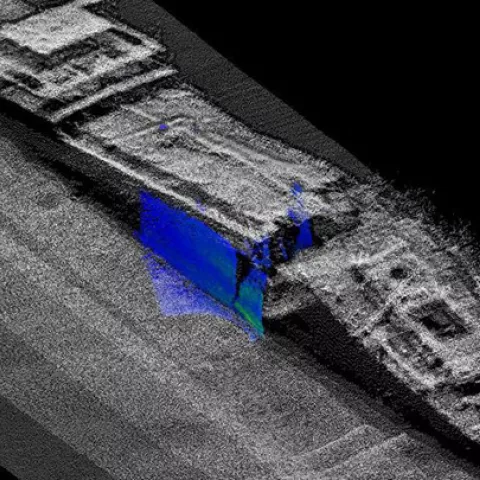Today, Bureau of Safety and Environmental Enforcement (BSEE) Historic Preservation Officer and Senior Marine Archaeologist Chris Horrell is part of a research team that is working offshore in the Gulf of America, examining how oil spilled during the Deepwater Horizon tragedy in 2010 is affecting the organisms living on shipwrecks. Horrell is serving as one of the Co-Principle Investigators for the project and has been providing information regarding the overall archaeology. The study, funded by the Bureau of Ocean Energy Management, also includes participation from George Mason University, University of Mississippi, Louisiana Universities Marine Consortium, University of Montana, Naval Research Laboratory, PAST foundation, C&C Technologies and Droycon Bioconcepts. The crew departed for the first leg of the study on Friday, March 14th and will return on Saturday, March 22nd.
Six shipwrecks are being investigated as part of this study: three wooden-hulled sailing ships dating to the 19th century (Ewing Bank wreck, Viosca Knoll wreck, and Mica wreck) and three World War II-era steel-hulled vessels (Halo, Anona, and U-166). These sites were discovered and examined prior to the oil spill by archaeologists, though only two have been visited since May 2010. The six shipwrecks were selected for this study based on several factors: proximity to the 2010 oil spill area, availability of pre-spill data for comparison, proximity to known natural hydrocarbon seeps, similar date ranges for the metal-hulled vessels (World War II-era) and wooden-hulled sailing vessels (19th century), and comparable water depths.
Horrell and the rest of the research team hope to achieve a better understanding of how shipwreck microbial communities structure and function, the role of biofilms in shipwreck stabilization and artificial reef formation and how microbials respond to hydrocarbon or dispersant exposure on wooden and metal-hulled shipwrecks in comparison with wrecks not exposed to these materials. Additionally, the team hopes to learn whether hydrocarbon or dispersant exposure accelerates wood degradation and/or metal corrosion or if this exposure instead reduces these processes.
More information on the study and the research team can be found here: http://mbac.gmu.


A sonar image of the tanker Halo, sunk in May, 1942
